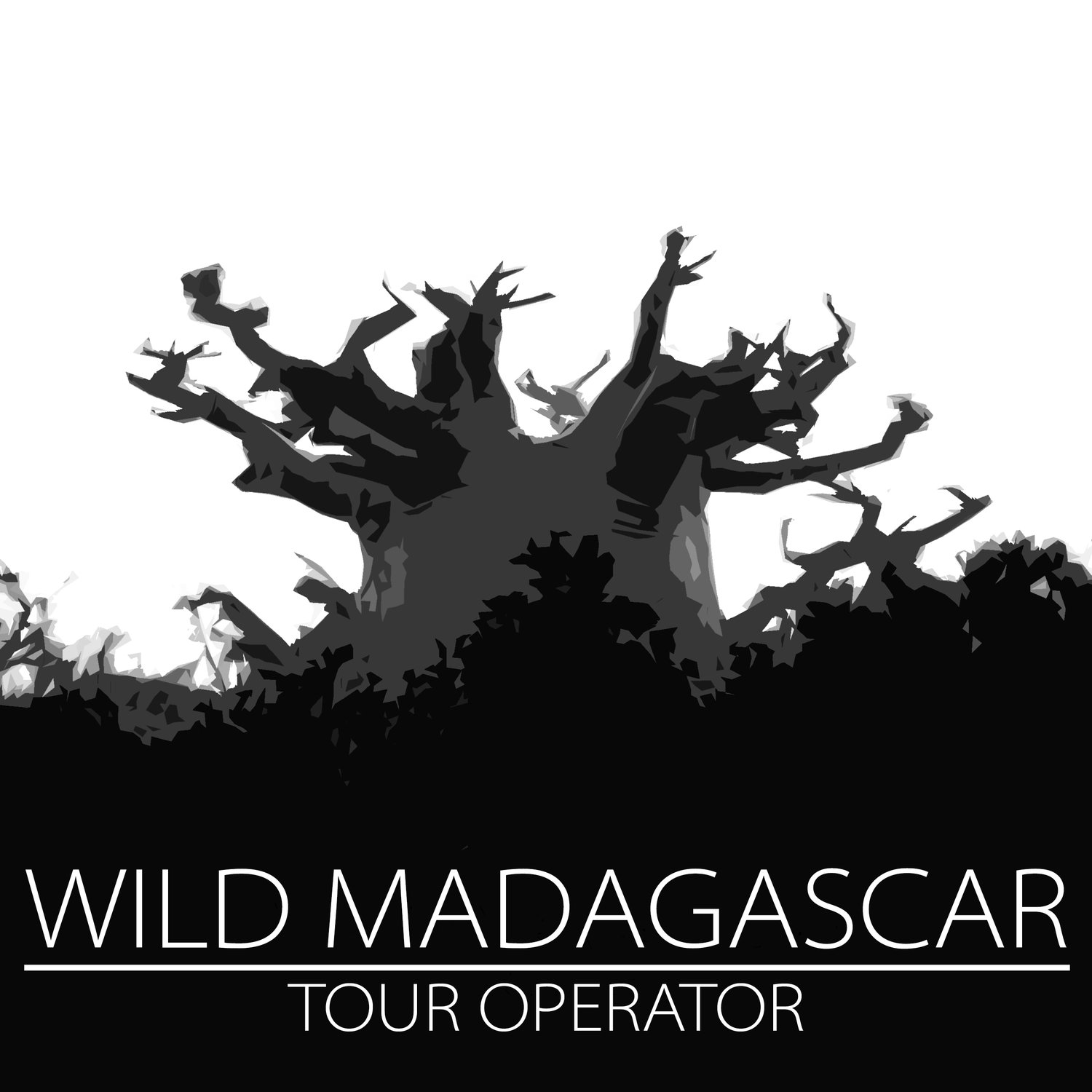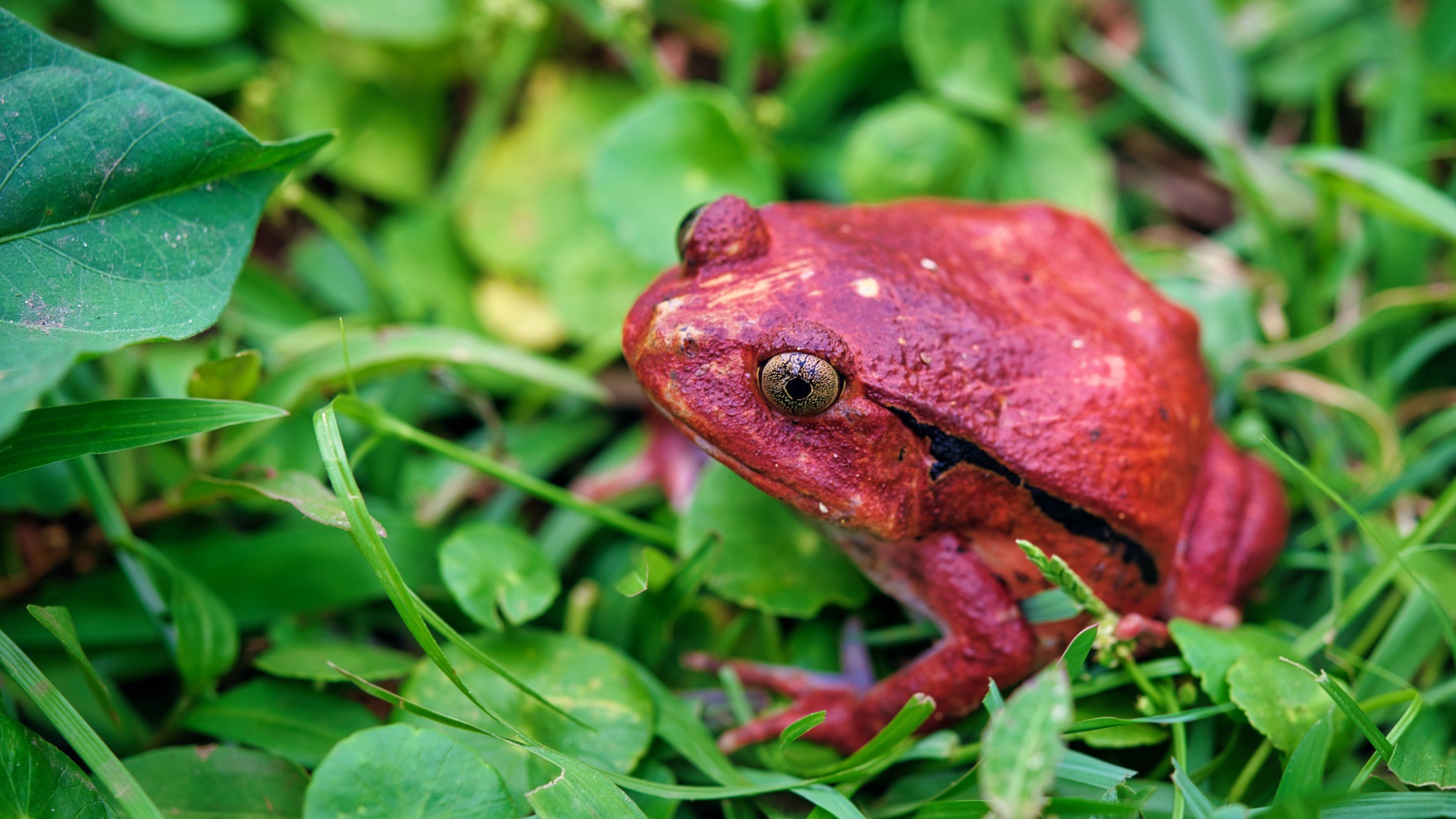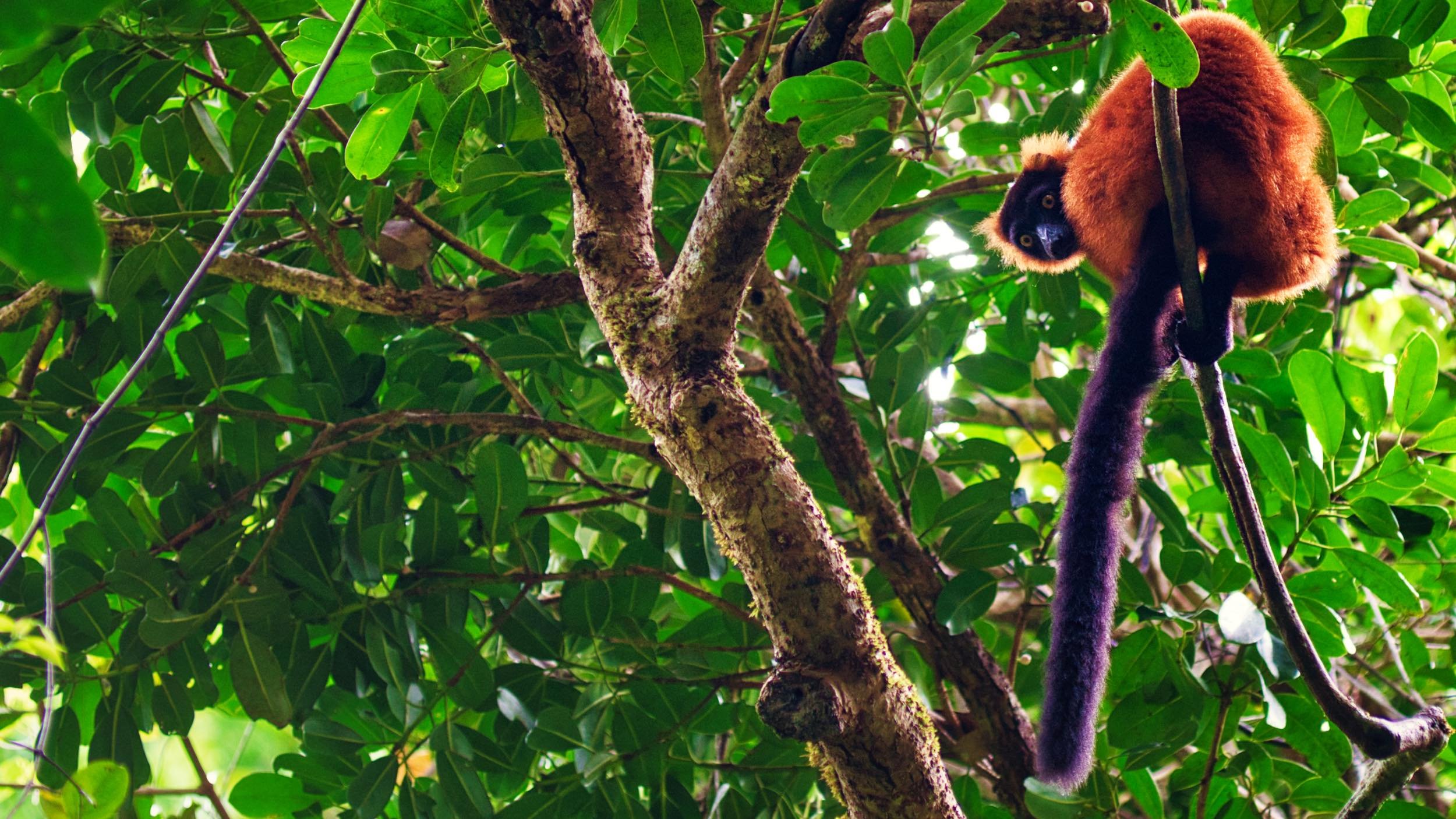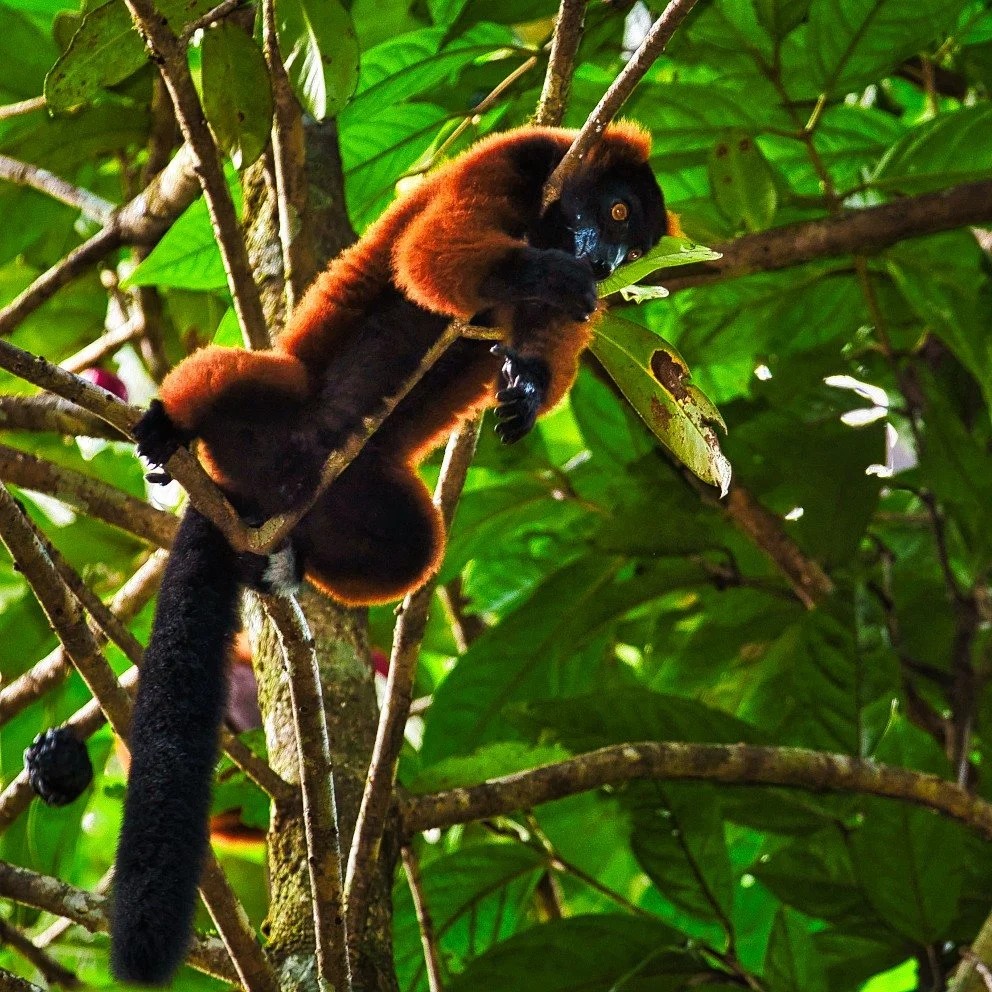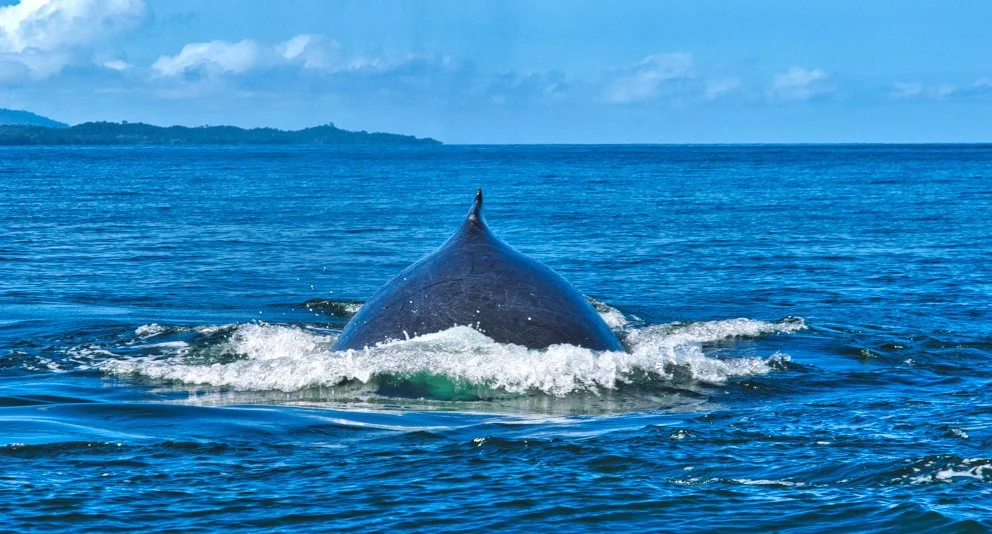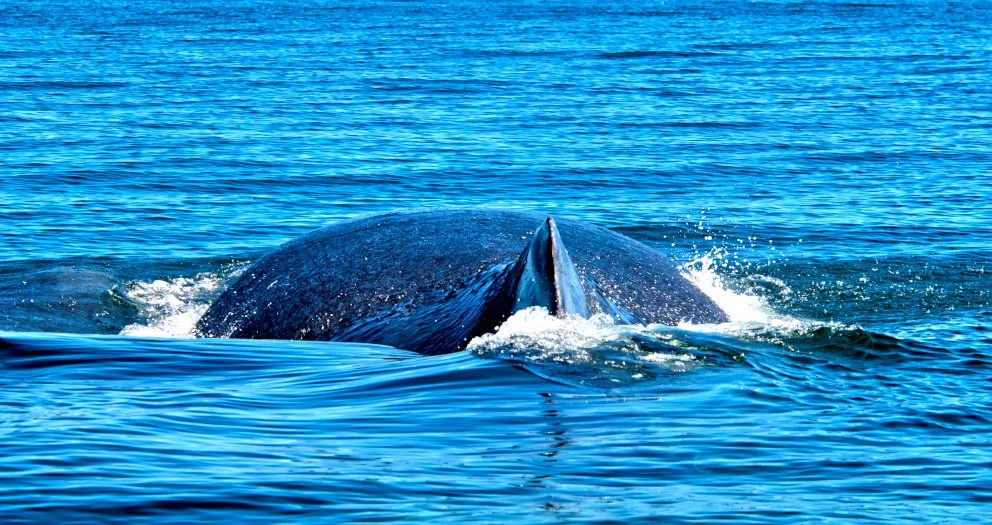Masoala National Park
Stretching to the extent of the Masoala peninsula in the Northeastern part of Madagascar, bordering the eastern shore of the bay of Antongil, Masoala National Park encompasses 230’000 ha (sources Madagascar National Parks) of marine area, littoral, lowland and medium altitude moist evergreen forest home to sought-after critters and plants amongst which Helmet Vanga, Bernier's Vanga, Red-Ruffed Lemur, the Masoala pitcher-plant, the iconic tomato frog, and Humpback whale which calves in the warm sea of the bay, to name but a few.
Despite different means of access, flying to the town of Maroantsetra followed by southeastwards boat transfer traversing almost two third of the Antongil Bay is the most convenient means of transportation to gain access to the part of the park national of Masoala accessible to the public and to the lodges of varying categories and prices providing accommodation while exploring the park.
Highlights
Encompassing forestal and marine protected areas and sand beach shore, Masoala National Park perfectly blends exploratory and beach related relaxing holidays. Forestal and marine wildlife is rich and varied providing astounding encounters with locally endemic lemurs, birds and critters as well as other species of vertebrates amongst which humpback whale. Hiking required to rendezvous wildlife can be graded to adapt at best individual physical fitness. Active visitors will meet their need for more strenuous trekking on a track along the Western border of the Masoala National park winding at times in the forest, on sand beaches and across rivers ; trekkers shall not mind getting their feet wet and dirty. Sea and river kayaking, farniente or immersion into local villages daily life are more relaxing activities to fill days at the beach resorts. The town of Maroantsetra also offers specific visits to observe locally endemic wildlife, to visit plantations of spices amongst which Vanila and to acquaint to architecture typical to coastal, humid towns and areas along the East coast of Madagascar.
Recommended Duration of Stay
To fully experience and enjoy wildlife and nature, the beach and turquoise sea at Masoala, we ideally recommend a minimum of three (03) consecutive overnights on spot. Considering the amount of time consumed at the airports of Antananarivo and Maroantsetra preceding and following the one and quarter (01:15) of hour minimum flight operated by the local commercial Malagasy airline Tsaradia and the one hour minimum boat transfer depending on the type of vessel operating the transfer and the state of the sea, one to two extra nights at Maroantsetra might be needed especially as we advise against boat transferring in the afternoon the sea systematically roughening with the wake of the wind, a very likely sickening even dreadful experiment.
All in all, the tour of Masoala National Park is best experienced with,
1-2 overnights at Maroantsetra
2-3 overnights at Masoala at Ambodiforaha or Tampolo.
Littoral Evergreen Forest, Masoala Park
The Northern and Eastern shore of the Antongil bay extending from the mouth of the Antainambalana river through Cape Masoala displays a succession of rocky shore and sand beaches of variable grain scattered with boulders constantly recalling the geologic history of the Masoala Peninsula with the underling granitoid rocks aged between 2.5 and 3.2 Ga (Gigaannum), the oldest rocks of the cristalline basement of Madagascar known to geologists. To almost the entirety of its length, the sea-shore is shadowed by littoral evergreen forest, stands of bamboos or by secondary forest, discontinued by estuaries of rivers and streams of different sizes hikers and trekkers wade in their peregrination in quest of adventure and wildlife populating different types of vegetation.
Wildlife, Lemurs
Red-Ruffed Lemur is for lemur watchers the flagship of the park national of Masoala where it is endemic. Red Ruffed Lemur, Varecia rubra, inhabits the lowland moist evergreen forest of Masoala in the canopy of which, 25 to 30 m high, the primate moves quadrupedally. Notwithstanding permanent presence at the crown of tall trees on which fruits it is usually observed feeding, this is the most frugivorous of all Malagasy lemurs with up to 90% of its diet composed of fruits, Red Ruffed Lemur is somewhat easily located being one of the most vocal extant lemurs which loud raucous vocalization reaching far distances cannot be mistaken nor ignored. Commonly playful, Red Ruffed Lemur is a natural entertainer holding acrobatically ridiculous stances.
Wildlife, Amphibian
Another icon of the wildlife in the Northeastern Madagascar although not physically encountered within the perimeter of the Masoala national park is the Tomato Frog, Dyscophus antongilii. Colonising open habitats, Dyscophus antongilii is easily met in shallow ponds and artificial sewage ditches inside and in the outskirt of the town of Maroantsetra, de rigueur start or end of visits to the national park of Masoala.
Distinctively large size, up to 105mm for the adult female, males are significantly smaller in size and lighter in weight, and vibrant red-orange colour, render tomato-frog a main target of international pet-trade leading to the inclusion of the species in the Appendix I of CITES hence its prohibition to commercial trade (see CITES for further information). Get ready to “trespass” private property with your local tour guide to observe the peculiar and attractive critter which can be hidden underneath litter along artificial sewage ditches frequented by domestic fowl.
A study on the reproductive phenology of Dyscophus antongilii carried out between 2003 and 2011 in the town of Maroantsetra has permitted the definition of tomato frog as a sporadic wet season breeder reproducing at irregular intervals meaning that the probability to encounter the species at whatever season is very high, a particularity setting apart the area of Maroantsetra and the amphibian at the opposite of hibernating/aestivating species.
Wildlife, Humpback Whale
Photos. It was a dreadful moment to live when this pair of mother and calf veered then rushed in our direction confronting our frail speedboat to dive only few meters ahead of our small boat and sped passed us not too deep for us to clearly see the silhouette of their body. Adrenaline was high, for shock, dread and wonderment ; feelings only wildlife brings about.
Occurring in all major oceans worldwide, humpback whales, Megaptera novaeangliae, are known since memorial times at the very least along the East coast of Madagascar, in particular on the island of Sainte Marie, pervading local folklore well before the advent of commercial whale-watching. Seasonal residents, the first Megaptera novaeangliae, usually gestating females, precede males, non-pregnant and juveniles to the breeding ground off the coasts of Madagascar, primarily the channel of Sainte Marie and the bay of Antongil, several days prior to June solstice. The pregnant female humpback whales calve and nurse their young in the shallow waters until they get weight and strength to face alongside their mother the long, over 6000 km, migration journey back to the Antarctic, the feeding ground for Humpback whales. By July, pregnant and newly mother humpback whales will soon be joined by the pod kicking off the spectacle surrounding mating rituals, lobtailing, breaching, spyhopping, singing, etc…, behaviour to which we, whale-watchers, are congregating, also seasonally, to witness and experience for two months and so.
Shallow breeding waters favoured by humpback whales including the bay of Antongil still are open waters to cover in the purpose of confronting humpback whales. Whale watchers are required to sail off during the Austral winter with prevailing trade-winds blowing almost permanently contributing to moisture and rain and likely roughening the ocean. Whale-watching is anything but a passive activity. Likewise any wildlife entreprise in Madagascar, it compels participation and commitment; be prepared to overcome sea sickness and wet days, pack for luck and patience for long hours off scrutinising every square meter of the ocean the reward is life lasting awe. Of course, the luckiest might not need sail out to observe whales performing from the shore.
